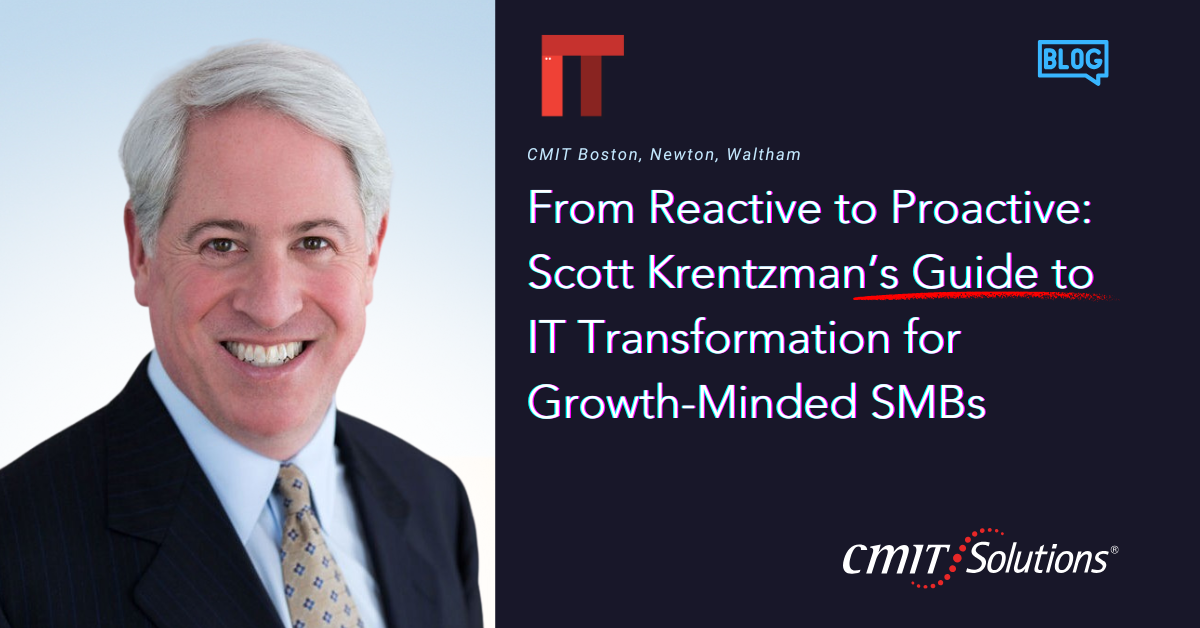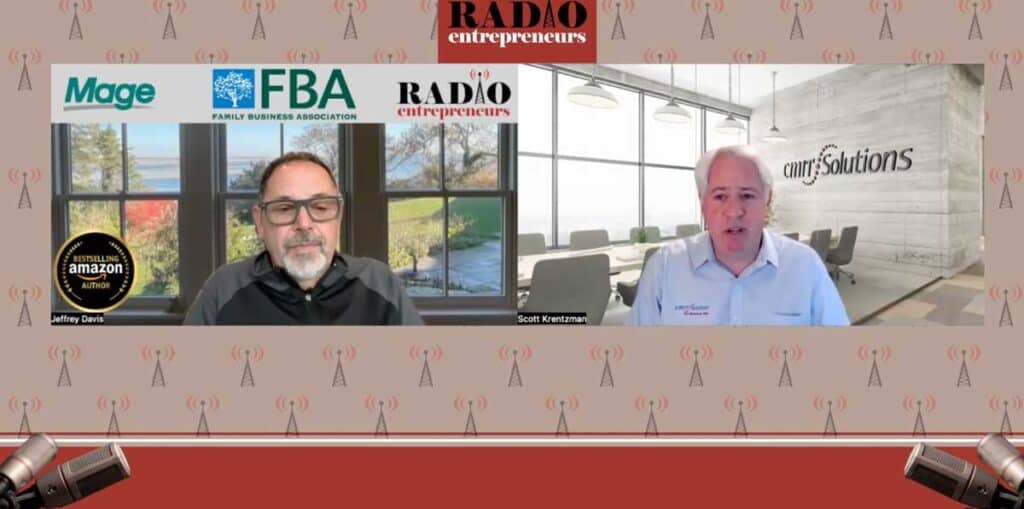For small and mid-sized businesses (SMBs), IT is no longer just a utility—it’s a strategic driver of success. In today’s dynamic digital environment, reactive approaches to IT are liabilities. Instead, businesses must pivot toward proactive solutions that anticipate problems, enhance productivity, and fuel long-term growth.
Scott Krentzman, the trusted name behind CMIT Solutions of Boston, Newton, and Waltham, has worked with many of businesses across healthcare, finance, legal, and education sectors. His proactive IT philosophy empowers SMBs to stop waiting for things to break and start planning for what’s next. Here is Scott’s 10-part guide to IT transformation that growth-minded SMBs can implement today.
1. Understanding the Reactive IT Trap
Reactive IT means waiting until something breaks—a server crashes, a workstation freezes, a ransomware attack locks up critical files. In these scenarios, business operations grind to a halt while costs soar. Emergency IT fixes are often more expensive, stressful, and disruptive than a proactive strategy.
Scott has seen how companies with no regular patching, outdated software, and unmonitored systems fall behind. These organizations face unpredictable expenses, cybersecurity vulnerabilities, and significant productivity losses.
2. The True Cost of Downtime and Disruption
One hour of IT downtime can cost an SMB between $10,000 and $25,000. That includes lost sales, wages, customer confidence, and brand damage. Now multiply that by repeated incidents across the year.
Scott points out that reactive strategies don’t just slow businesses down—they erode trust. Business continuity plans, redundant systems, and data backups help mitigate downtime, but a proactive IT model reduces its occurrence altogether.
3. Why Growth-Minded SMBs Must Think Like Enterprises
Enterprise-level IT isn’t about budget; it’s about mindset. Scott believes even the smallest companies can adopt practices like:
- IT policy development
- Endpoint monitoring
- Cybersecurity training
- Cloud-based infrastructure
By thinking big, SMBs scale confidently, mitigate risk, and present themselves as reliable partners.
4. What Proactive IT Really Looks Like
Proactive IT is comprehensive. It includes real-time monitoring, 24/7 support, regular system audits, and a lifecycle management plan. Scott’s team also emphasizes:
- Scheduled patch management
- Asset tracking
- Phishing prevention
This approach helps identify threats before they materialize and ensures that systems are always optimized for peak performance.
5. IT Assessments: Scott’s First Step Toward Transformation
Every transformation starts with discovery. Scott Krentzman’s team begins each client relationship with a full IT assessment. This evaluation identifies hardware inefficiencies, software vulnerabilities, compliance gaps, and opportunities for optimization.
Using insights from this audit, businesses receive a tailored IT roadmap aligned with their budget and goals.
6. Strategic IT Planning: Building a Scalable Foundation
Strategic IT planning is where reactive becomes proactive. Scott and his team collaborate with SMB owners to design 12- to 36-month plans that cover:
- Device lifecycle management
- Software procurement
- Scalability for hybrid or remote work
- Unified communications
This alignment minimizes surprises, controls costs, and creates operational agility.
Final Thoughts: From Firefighting to Forward-Thinking
Proactive IT is the foundation of modern business. With Scott Krentzman’s expertise, Boston SMBs no longer need to wait for systems to fail. Instead, they can predict, plan, and propel their future with technology that works.
If your IT feels more like a burden than a benefit, it’s time to make the switch.







